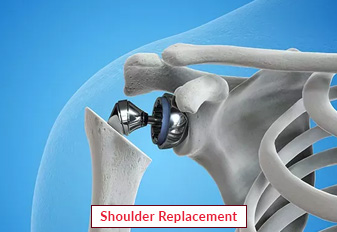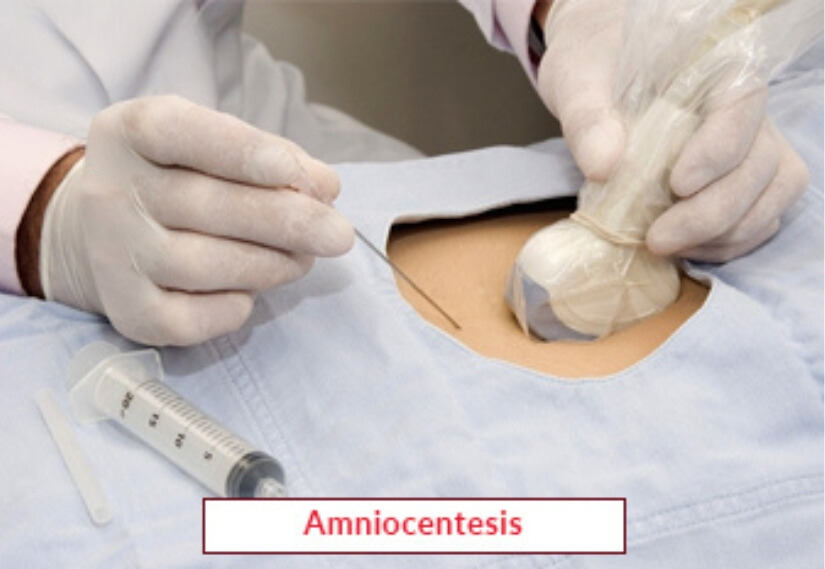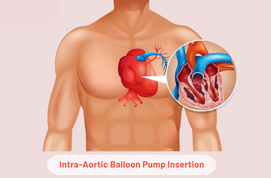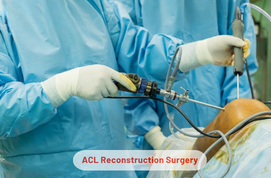Shoulder replacement treatment is a surgical procedure in which a surgeon replaces a damaged or broken shoulder joint with an artificial one. This surgery is also called arthroplasty surgery. The shoulder joint’s a type of ball-and-socket joint. The top of your upper arm bone is shaped like a ball, and it fits into the cup-shaped socket in your shoulder blade, kind of like a ball-and-socket joint. When this joint is damaged, you may feel pain and discomfort during movement.
The orthopedic surgeon removes the infected part of the shoulder. And a new joint made of metal and plastic is implanted in place. After this medical surgery is done with, you will have to undergo physical therapy. It enables a speedy recovery and quick strength in the shoulder joint. This medical surgery is commonly employed so that patients return to their day-to-day activities with minimum endurance of pain.
Types of Shoulder Replacement Treatment
Some types of shoulder replacements that are designed to satisfy specific needs are listed below:
- Total Shoulder Replacement: It is the most common type and a complex procedure. Here the shoulder joint is replaced with artificial parts. The implant consists of metallic and plastic components.
- Partial Shoulder Replacement: This type of procedure is often done when the socket is still healthy. Only the injured portion of the shoulder is replaced. Typically, only the ball of the humerus is changed while the socket is untouched in the scapula.
- Reverse Shoulder Replacement Surgery: This type swaps the positions of the ball and socket.
Who Needs Shoulder Replacement Surgery?
If your shoulder joint is injured or ill at ease and no other therapies are effective, you may require this procedure. Common reasons for the surgery include:
- Osteoarthritis: It is also known as wear-and-tear arthritis. Osteoarthritis damages the connective tissue that covers the ends of bones and helps in movements.
- Rotator Cuff Injuries: The rotator cuff is a group of muscles and tendons that surround the shoulder joint. Rotator cuff injuries sometimes can result in damage to connective tissue and bone in the shoulder joint.
- Fractures: Shoulder fractures that are serious and need urgent attention may necessitate replacement.
- Joint Deformities: The change of joint shape may impair the functionality of the shoulder.
Benefits of Shoulder Replacement Treatment
This procedure provides many benefits to people who suffer from extended shoulder joint discomfort and dysfunction. Some of these are:
- Pain Comfort: This medical procedure immediately alleviates chronic shoulder pain, reduces discomfort and redness. Also it enhances the overall quality of life.
- Better Motion: Pain can limit the ability to perform simple activities like lifting, reaching, and dressing. Shoulder replacement surgery enhances joint functionality and enlarges the range of motion, also making daily life easier.
- An Improved Quality of Life: It helps to improve the quality of life after replacement. You can enroll in any activities, such as sports, hobbies, and daily work.
Risks & Complications in Shoulder Replacement Surgery
Possible consequences of shoulder replacement surgery are:
- Fracture: The humerus, scapula, or glenoid bones can all break during or after surgery.
- Dislocation: It is possible that the ball of your replacement joint will come out of the socket.
- Implant Loosening: Shoulder replacement components are strong, but they may loosen or wear over time. In rare situations, you may require additional surgery to replace the loose components.
- The Rotator Cuff Failed: The rotator cuff, a group of muscles and tendons that support the shoulder joint, might gradually go through with a partial or total anatomic shoulder replacement.
- Nerve Injury: The nerves of the place where the implant is inserted may be harmed. Numbness, weakness, and irritation can be some of the symptoms that may result.
- Blood Clots: After surgery, clots can form in the legs or arms.
Complete Procedure of Shoulder Surgery
Below, we mention the procedure of shoulder reconstruction surgery:
- Patient Evaluation: The doctor will check your medical history, X-rays, or scans to examine the condition of the shoulder joint before starting surgery.
- Preparation: General anesthesia will be given to keep you from feeling pain during medical procedures. You will not have any discomfort and will feel sleepy during the operation.
- Incision: The surgeon will make a cut over the top of your shoulder to reach the affected joint. The position and the size of the incision can also be different according to the type of the replacement.
- Bone Preparation: The injured section of the shoulder bone and cartilage has been excised, and the area prepared for the new prosthetic components.
- Placement of the Implant: The surgeon inserts artificial joint pieces consisting of metal, plastic, or ceramic. These contain a replacement ball to replace the upper arm bone’s head, and a socket.
- Evaluation: The surgeon will make sure that the joint is realigned properly.
- Closure: Ensure that incisions are closed with stitches after finishing the surgery. The dressing protects you from any infections.
- Recovery Time: Recovery is also an essential part of the treatment; the healthcare team takes the patients and shifts them to the recovery room. After that, the doctor checks and evaluates the wound. And complete the discharge formalities for going home.
Note: This includes pain treatment, elevating the elbow to reduce swelling, and beginning physical therapy to recover flexibility and strength. The treatment approach promotes normal healing and restores function to the elbow joint.
Our Other Services
Latest Health Tips
Can Immunotherapy Cure Stage 4 Lung Cancer?
Early Signs of Cervical Cancer
Foods that Kill Cancer: Leafy Vegetables, Grains, & More
What Stage of Cancer is Immunotherapy Used For?
Which is Worse for Cancer, Sugar or Alcohol?
Vaccines That Prevent Cancer
What Kills Cancer Cells in the Body Naturally?
5 Early Warning Signs of Bone Cancer
Submit Your Enquiry
Testimonials


























